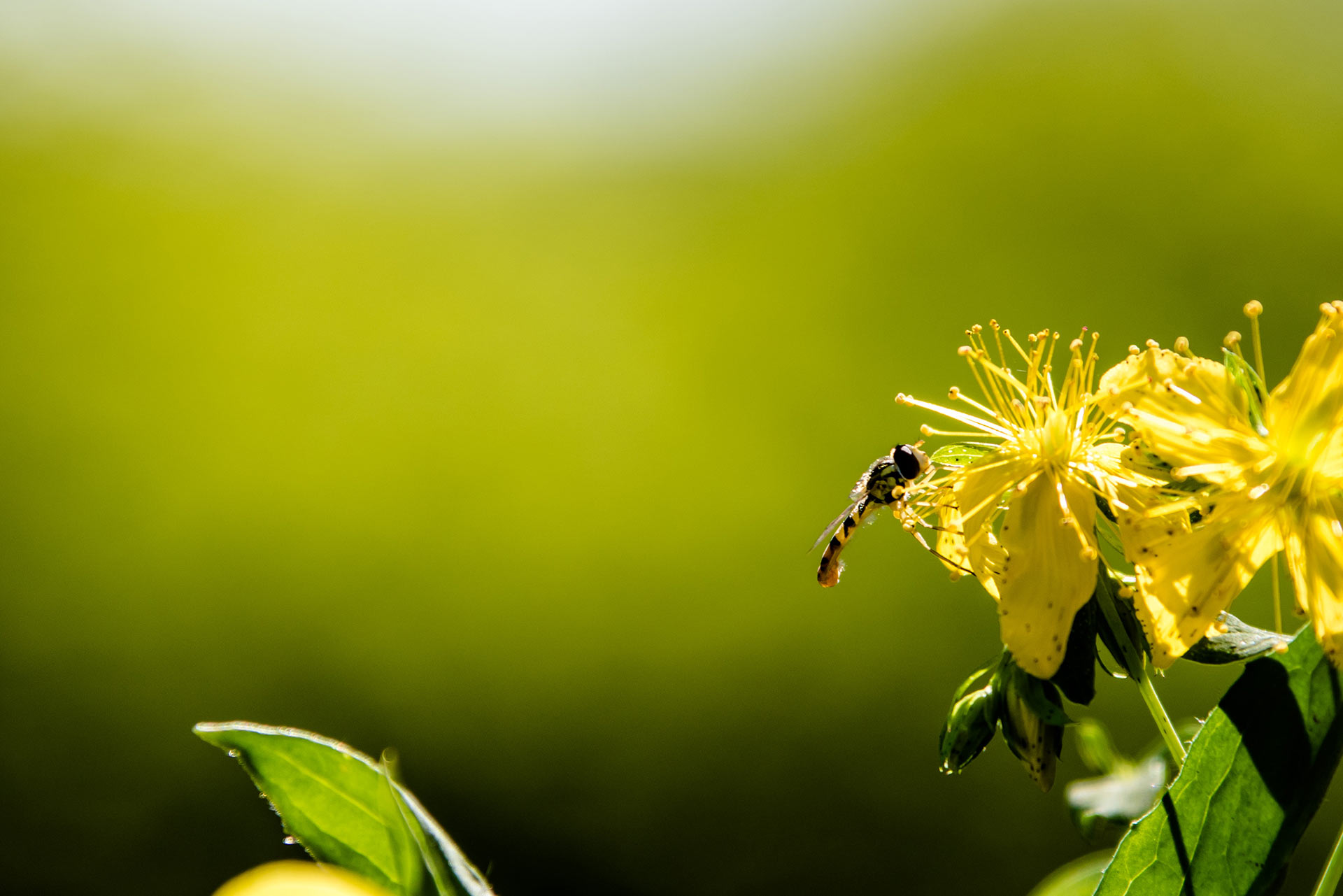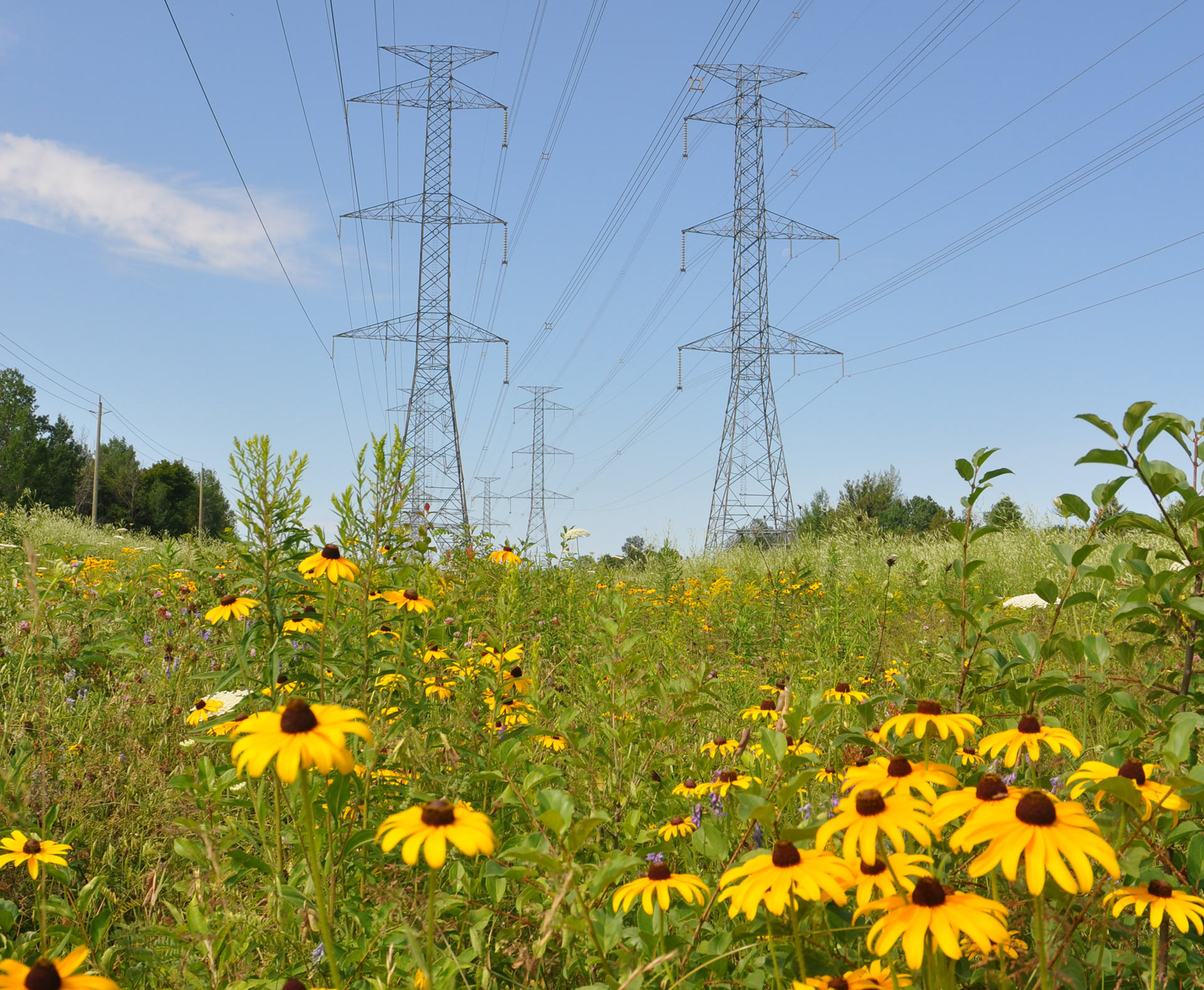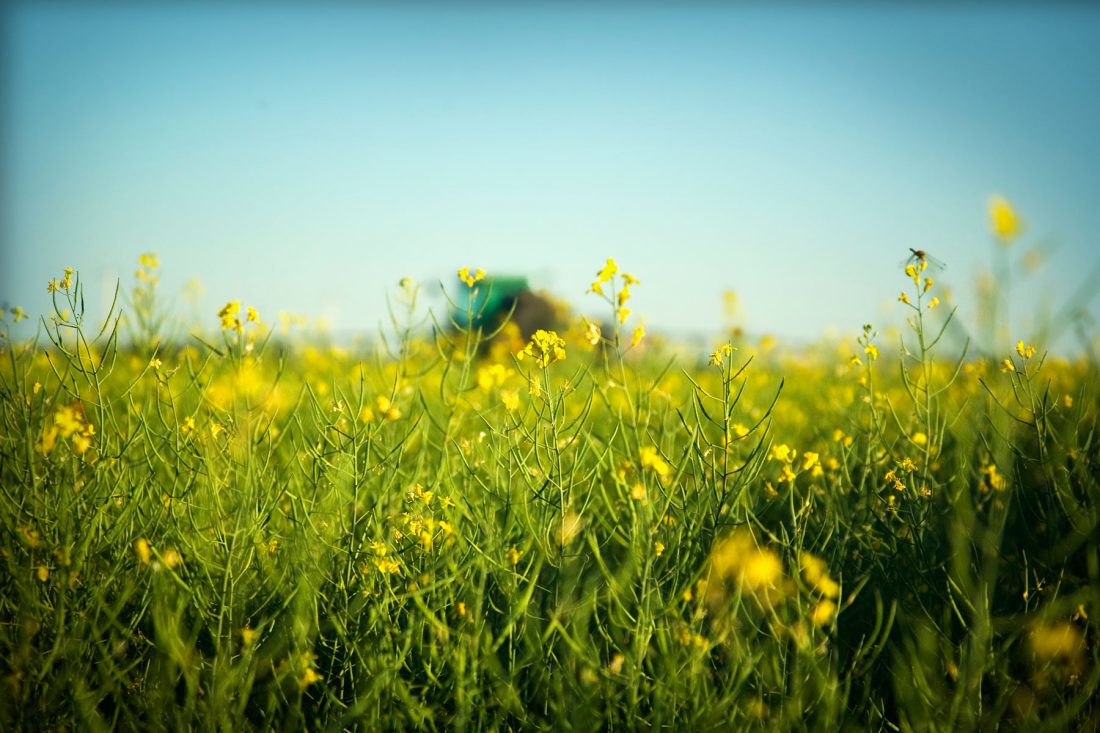Pollinator habitat is becoming increasingly diminished and fragmented, due in part to the growth of human communities, transportation corridors and industry.
Almost 90%. Flowering plants across the globe that are dependent entirely or in part on animal pollination.
But it doesn’t have to be this way. In fact, the creation of pollinator habitats can be quite complementary to these landscapes.

By working together, private and public landowners can create pollinator pathways – pesticide-free corridors of native plants that provide nutrition and habitat for pollinators and help them to disperse into new habitats in response to climate change.
Pollinator pathways restore and create a diversity of permanent, high-quality, wildflower-rich habitats. They can be created by connecting multiple features: blossoming pastures on farmland, boulevards planted with pollinator-friendly plants in towns and cities, backyard gardens, and transmission lines blooming with native wildflowers.
There is no one-size-fits-all approach. The goal is to connect properties at a distance that is within the range of most native pollinators in the area. For example, if local native bees have a range of about 750 metres, properties would be no farther apart than that, and ideally corridors of native habitat would connect these properties.
Definition: Pollinator Pathway is a pesticide-free corridor of native plants that provides nutrition and habitat for pollinators and helps them to disperse into new habitats.
Creating pollinator pathways requires a lot of coordination and planning, but the benefits are plentiful. Not only do they bolster the number of pollinators and the services they deliver, but they also provide habitat for other wildlife and an opportunity for people to participate in the planning and to interact with nature in a meaningful way.
Corporations Can Create Pollinator Pathways
Natural gas pipelines, electric transmission corridors, solar arrays and wind farms occupy millions of acres of land across the country. For safety reasons, many companies must maintain vegetation under a certain height on their fields and right-of-ways – the long strips of land under power lines, over/beside pipelines and along roads. Most pollinator-friendly plants are a good fit for these restrictions, making them a good option for managing vegetation on corporate landscapes.

Companies can foster pollinator habitat on their land in a number of ways:
- Restore the disturbed landscape with natural, native vegetation – preferably with flowers and shrubs that are in bloom from early spring through to fall to ensure continuous pollen and nectar sources.
- Maintain vegetation in a way that minimizes harm to pollinators where possible. For example, cutting back on harmful herbicides, mowing only at the end of the summer once pollinators have finished using the plants, and removing invasive species.
- Companies can enhance pollinator habitat by planting flowers and shrubs that provide pollinators with nesting and overwintering sites.
Farmers can contribute to Pollinator Pathways

Farmers can help recover pollinator populations in a number of ways. They can create and maintain a greater diversity of natural habitats, for example by planting native flowering plants along the edges of croplands. The maintenance of hedgerows and woodlots also helps support wild pollinators, as many species nest within these habitats.
Farmers can decrease the exposure of pollinators to harmful chemicals by reducing their use of pesticides, seeking alternatives for pest control, and taking measures to reduce pesticide drift from crop plants to other areas. If using Honey Bee colonies for pollination, farmers can press for better pathogen control coupled with better regulation of trade and use of commercial pollinators.
In doing all of the above, farmers can protect the pollinators using their fields, contribute habitat to pollinator pathways, and boost the number of pollinators in their habitat overall.
You Can Contribute to Pollinator Pathways

Do you have property? A backyard? A balcony? A community garden? You can be an integral part of creating national pollinator pathways.
- Remain neonics-free
- Plant a pollinator garden
- Read up on our wildlife-friendly gardening tips
- Build a bee hotel
- Make a balcony garden
- Consider these plants




7 comments
Dilemma: I have an invasive plant identified as a Giant Hymalayan Impatiens. I tried to rid my property of it a few years ago but it’s back. I was going to try again this year but I saw how the bees love it. What is the best path? Tiny wasps love the goldenrod as well.
Hi Marilyn,
When a plant is invasive, it’s important to remove but one can replace with a pollinator-friendly plant that is not invasive….so you can still help the bees. I’m not sure of your location so I can’t suggest an alternative, but you can always check our Native Plant Encyclopedia at http://cwf-fcf.org/en/resources/encyclopedias/native-plant-encyclopedia/
Good luck!
That’s right!…….
Some people in WI think they will block pollinator home pathways, National wildlife Federations, Monarchs /Pollinator alike activities many top choose from …other groups wildlife activities also… by threats because of jealousy and color family, the way they get monitored, and want to control some areas and I think they need to have new laws that will put them in a second level protection under wildlife and pollinator danger laws , so people won’t feel threatened, as long as they are registered with any wildlife or advocates groups conservation( as smart as the protected ones!) or farm agency ran that is not under the state federal … Conservations types wildlife ..those are different and main vacations and protected areas…
and would be family homes and small farmers d agency divisions! So it would give them higher then just normal law in your local area under state laws, and County something Kind of like they did for hunters.
You can’t harass hunters or bother them… or block their legal activities when registered and trespass permitted! why not the others above many mentioned! Everyone wins feels safer from conservation and wildlife haters , now the unprotected non danger listed and your local wildlife is better protected!!and people won’t run through thinking its hunting /off roads grounds not of you land where it is not permitted without contracts( unless needing to get downed animal shot!) or force unlawful abuse! I monitor my land and it’s helping famers is worth it and important like their hunting areas are! It is protection for law siute by conservation other opposite activities!!
The wildlife would like that also!
Something to talk to with for advocate wildlife groups and under higher level top protected agencies!!
Does not include those state road worker and Utility workers, they notify land owners before work and after they refine and smooth area down, land for owner to replace their wildlife/pollinator…registered mapped and dues paid project!